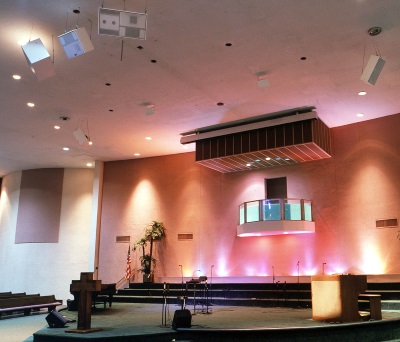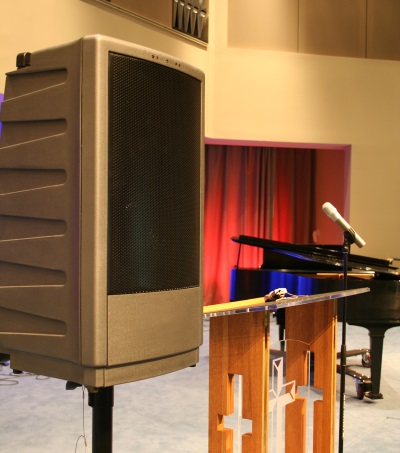
Frequency Response
This is a measure of how well a loudspeaker reproduces input signals across the 10 octaves of human hearing. The engineering obstacles that prevent a single loudspeaker component from achieving a perfect score on the frequency charts start with the physical makeup of sound waves and the limitations imposed by the need to make the loudspeaker enclosure practical in size and weight.
Low-frequency waves can be as long as 56 feet, while highs can be as short as one-half inch. Building a device that will faithfully reproduce these extreme sizes and everything in between is nearly impossible. Further complicating the design is the need to keep the box as small as possible and aesthetically pleasing.
When a frequency response is stated, it will have associated with it a range-defining number such as “+ or – 3 dB (decibels).” Without the range limiter in the equation, the numbers are meaningless, because any loudspeaker can reproduce almost any frequency at some level (i.e., – 45 dB).
The standard range of +/-3 dB actually grants a relatively wide window of 6 dB and should be considered the maximum usable variance. For full-range designs, a frequency response of 50 Hz to 15,000 Hz (15 kHz) can serve as a benchmark of standard performance.
Sensitivity
Like frequency response, sensitivity only carries meaning when parameters are clearly defined. The common specification for sensitivity includes the phrase “1w/1m” or one watt, one meter.

Therefore, an input of 256 watts means an output of 111 dB, which will drop to 93 dB at a distance of 8 meters from the loudspeaker due to the Inverse Square Law – a doubling of distance results in a 6 dB drop in output at a given location because the doubling requires a four-fold increase in coverage area.
In comparison, a more sensitive speaker (92 dB@1w/1m) with the same frequency response will deliver 98 dB at 8 meters (a bit more than 25 feet) distance. The 5 dB gain in output is free in that it cost no more input to get more output. As with all designs, however, there are tradeoffs and sensitivity is just one part of the puzzle.
Power Handling
This spec is the yin to sensitivity’s yang, as an increase in one typically results in the decrease of the other. For instance, an easy way to increase power handling is to make the components more robust, but the added mass needed to improve the drivers’ power handling causes those components to be less sensitive, with the common result of no increase in overall output level.
Power handling capability is important, though, to ensure the long-term viability of the loudspeaker system. Given the uncertainties that are the heart of live sound, it’s possible for a loudspeaker to receive an input spike that is magnitudes above the average operating level. For those inevitable peaks, adequate functionality at extreme levels can be the difference between a system’s last gasp and continuing performance.

Program power is often rated at twice the long-term amount and represents the wattage of variable broadband music material the loudspeaker can handle for a shortened time. By the way, an impressive – but useless – rating is the peak program (or impulse wattage), which represents the power the system can sustain for a brief moment.
Directivity
This refers to a loudspeaker’s capacity to control the location of its output. Low directivity is suitable for placing broad coverage within a short throw distance, while high directivity excels in situations where pattern control is of primary importance.
Due to the physical attributes of sound waves, directivity control is frequency dependent. It’s relatively simple to control the dispersion of small high frequencies, but quite difficult to control where a 10-foot-long wavelength (100 Hz) might go.
Generally, the larger the mouth opening of the horn, the lower the pattern control remains effective. For instance, a horn mouth of two feet corresponds to control down to about 500 Hz. Therefore, a horn pattern rated at 60 degrees by 40 degrees will only display those degree coverages above the cutoff frequency dictated by the horn dimensions.

While modern commercial loudspeakers are fundamentally close to their ancient ancestors, given current technology’s computational abilities and rapid innovations, the loudspeaker of the future may eventually break free of its current bonds/limitations.
But for now, the issues of frequency response, sensitivity, power handling, and directivity are the defining parameters for objective judgment. How these specifications actually translate to overall sound quality goes to the subjective – but that’s another story.
